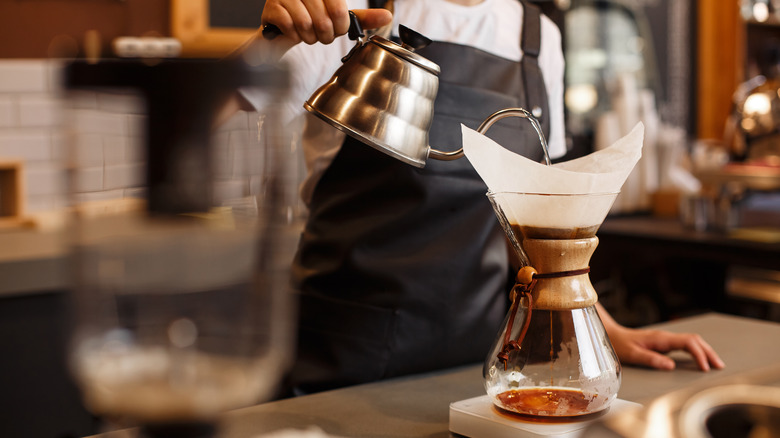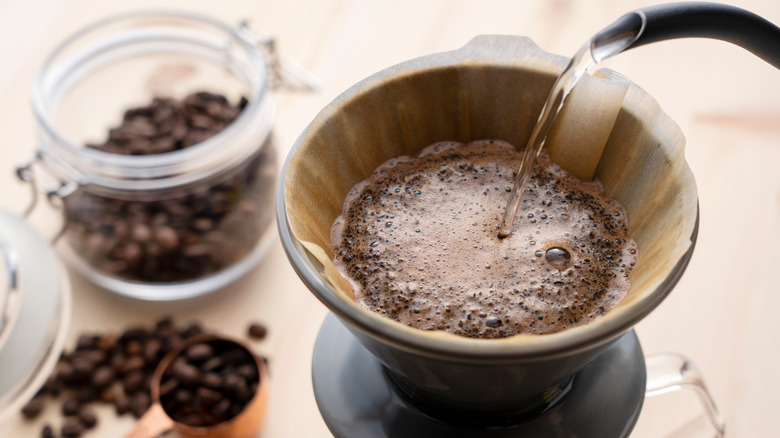The Biggest Difference Between Pour-Over And Chemex Coffee
Everyone has their own favorite method of brewing coffee. For those with large families, drip coffee makers create big-batch brews. An AeroPress Go is well-liked for its travel-friendly packaging. Meanwhile, espresso machines are known for their cafe-style creations, and Moka pots can create espresso-like shots without the need for a complicated machine. While each method has its advantage, the pour-over method stands a cut above the rest thanks to its reputation for producing a top-notch quality of joe.
The pour-over method typically involves a filter placed over a funnel-shaped device. As hot water is poured over the coffee grounds in the filter, it drips through the filter and into a mug placed below. Not only is this method pretty straightforward, but according to Roasty Coffee, baristas and coffee aficionados tend to prefer it over others for the amount of control that it allows through the whole process. Pour-overs also tend to extract more nuanced flavors out of the coffee grounds because the brewing process happens to be much slower.
Though the pour-over brewing method is popular among both baristas and regular coffee drinkers alike, the type of pour-over used varies. Names like The Kalita Wave, The Hario V60, the Clever Dripper, and even Chemex may sound like complex chemistry equipment, but in reality, they're nothing but different coffee makers that produce similar pour-over style coffees.
Chemex makes a pour-over style coffee using different filters
Pour-overs are both a method and a tool used to make coffee, and a Chemex is a type of pour-over in that it uses the same brewing method. The Chemex pour-over brewer uses paper filters filled with coffee grounds placed over a funnel-shaped container. Hot water poured over the grounds slowly drips through the filter, extracting the coffee into a glass beaker below. The difference between a Chemex and other pour-over brewing systems is in the paper filters. While other pour-overs use thin conical-shaped paper filters, Chemex has its own proprietary filters that are closer in texture to fabric than paper (via Sagebrush Coffee).
Due to its type of filters, Chemex uses coarser coffee grounds than the competition, which typically uses a finer grind size. This is also why other pour-overs tend to brew coffee a tad quicker than a Chemex, according to Voltage Coffee. However, the material of a Chemex filter removes more oil and grit from the coffee grounds than other pour-over filters do, making Chemex brews less bitter.
The lighter, smoother, cleaner, and less bitter brew comes with a catch — a Chemex tends to be costlier than other pour-overs. It is also less portable than other pour-over systems. So, it's up to you to decide whether the price and fragility are worth the subtle difference in java.

